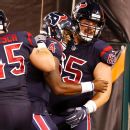Barnwell's 5 NFC West moves: Kick-starting 49ers, Rams rebuilds
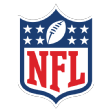
Many NFL teams script their first 15 (or more) plays before a game starts to focus on getting a few fundamental concepts right. Whether they want to attack a particular defensive player or scheme, exploit a perceived weakness or simply drill down on the offensive elements they think are most critical to winning, they pay particularly close attention to the plays they’ll start with on Sunday as they wrap up the week.
Likewise, organizations need to pay attention to the first few critical things they do during the 2017 offseason, as those might end up defining the year to come. Some teams have a lot to do before the new league year begins March 9, while others won’t have to make critical calls until the first day of the NFL draft on April 27.
In this two-week series for ESPN, I’ll be running through the first five things that should be running through each team’s mind as it prepares for the 2017 offseason.
Let’s get to the NFC West, where we have a near-dynasty, a team that unexpectedly fell apart last season and two teams that overhauled their coaching staffs in a hope to return to relevance …

1. Pick up Deone Bucannon’s fifth-year option. The Cardinals were ahead of the curve in using a first-round pick on Bucannon, who is maybe the best example of the hybrid linebacker/safety combinations that continue to sprout around the league. Arizona will want to keep him around for the long term, but it’ll at least get Bucannon for another season in 2018.
2. Franchise Chandler Jones. The trade for Jones may not have put the Cardinals over the hump the way that they surely expected last offseason, but the former Patriots star delivered on his end of the bargain. Jones stayed healthy, making it through all 16 games for the second time in his career, while finishing with 11 sacks and 21 knockdowns. He also drew enough attention to make things easier for Markus Golden, who broke out with a 12.5-sack season across from Jones.
Arizona’s in a difficult financial spot because of the heavy investments made in Carson Palmer and Larry Fitzgerald, who are due a combined $40 million on the cap in 2017. General manager Steve Keim was likely overaggressive in giving Palmer a one-year extension in August. Had the Cardinals not re-signed Palmer, they could have cut him this offseason and freed nearly $12 million in cap room. Instead, Palmer’s contract is stuck on the Arizona ledger, with his $24.1 million cap hit ranking as the third-highest in football behind Tony Romo (who won’t be playing under that cap hit) and Joe Flacco. Had Palmer retired, Arizona would have owed a staggering $28.8 million.
3. Create additional cap room. Keim probably needs to create extra space, given Step 4. The Cardinals have $35.5 million in room at the moment, but that will drop to $18.5 million if they franchise Jones. They’ll gain an additional $7.2 million if Daryl Washington remains ineligible, but Arizona might just want to move on from the long-suspended inside linebacker, a move which would instead create $4.7 million in cap room.
Besides Washington, the Cardinals will have to make some tough calls. With the news that Arizona intends to flip its tackles and move D.J. Humphries to the left side, Jared Veldheer’s $10 million cap hit looks untenable. Keim could create $6.8 million in space by releasing the former Raiders pickup. (Remember when the Raiders were a laughingstock by letting Veldheer and Lamarr Houston leave?)
Justin Bethel is a star special-teamer, but he has hardly been playable at cornerback. The player Bruce Arians called “a failure in progress” in December has a $5.3 million cap hit, with $3.8 million shaking free if he’s released. I suspect the Cardinals will keep him, in part because Bethel’s penciled in to start at cornerback in 2017, but they may force him to take a pay cut. In all, if Washington stays suspended and Keim cuts Veldheer and Bethel as suggested, the Cardinals would free up an additional $17.8 million.
4. Figure out who among the rest of the defensive pieces you want to retain. Including Jones, six of the seven Arizona players who led the defense in snaps last year are free agents. The only returning player from that group is Patrick Peterson. Inside linebacker Kevin Minter, safeties Tony Jefferson and D.J. Swearinger, cornerback Marcus Cooper, and two-time Pro Bowl defensive end Calais Campbell are unrestricted free agents this offseason. And that’s without including depth pieces like Frostee Rucker and Alex Okafor, who were starters in 2015 and will hit the market. (Rucker could retire.)
It’s difficult to imagine a win-now team like the Cardinals losing a superstar like Campbell, who is perennially one of the most underrated players in the league and hasn’t slipped much despite turning 30 this past season. Given that teams like the Buccaneers and Titans can and would likely offer Campbell in excess of $13 million per year without batting an eye, though, can the Cardinals really afford to re-sign him given their other needs? They might instead decide to let Campbell go, hope that Robert Nkemdiche shows more after a frustrating rookie season, and bring back younger talents like Minter and Jefferson with the money they’ve saved. Jefferson, who was tied for second in the league in tackles for loss, might be the best safety on the market if Eric Berry re-signs with the Chiefs.
There’s an alternate path that might be interesting. The Cardinals could choose to bring back Campbell via the franchise tag, re-sign Jefferson, Minter and Okafor, and take a swing at Swearinger or Cooper before targeting a released veteran or two in free agency. They could do all of that by letting Jones leave town. It would seem like a waste, but remember that the Cardinals are likely to recoup a high compensatory pick for doing so. If the Cardinals stay out of free agency, Arizona would pick up a third-rounder in the 2019 draft as compensation for losing Jones. In essence, given that they wanted to wash their hands of guard Jonathan Cooper (who subsequently failed to suit up for the Patriots), they would have dealt a second-round pick in the 2017 draft to New England for a year of Jones and a third-round pick in 2019.
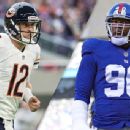
The Broncos could use a more experienced QB such as Matt Barkley, and adding Jason Pierre-Paul might vault the Bengals back to the playoffs. Who would provide a boost to the other 30 teams?
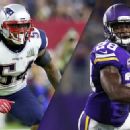
Should the Patriots franchise Dont’a Hightower? How should the Vikings handle Adrian Peterson’s contract? Doling out advice on the league’s top upcoming roster decisions.
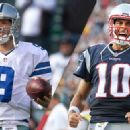
From Romo to Garoppolo, AD to JPP, Alshon to Dont’a, plenty of big-name players could be on the move this offseason. Where will they all end up? Our roundtable of experts makes predictions.
2 Related
Cardinals president Michael Bidwill has said the team intends to franchise Jones if it can’t come to terms with him on a long-term deal, but Bidwill might be saying that as a negotiation ploy. Given Golden’s breakout season, the Cardinals might just want to rely on the former Mizzou standout as their primary pass-rusher, bring back as much of the defense as possible, and let Jones leave after one season.
5. Find a receiving tight end. Arizona has basically gotten nothing out of the tight end position recently, with Troy Niklas struggling with injuries after being taken in the second round of the 2014 draft, while Darren Fells has been a replacement-level contributor. Starter Jermaine Gresham is a free agent this year, and the Cardinals will want to find a better option to work in the red zone. They probably won’t be able to afford Julius Thomas even if he’s released by the Jaguars, although a Thomas-for-Veldheer swap could make some sense. Keim might want to take a one-year flier on a player like Jacob Tamme or look for someone with soft hands in the draft.

1. Pick up Aaron Donald’s fifth-year option. Send the paperwork in twice, just in case.
2. Re-sign Trumaine Johnson. Los Angeles probably regrets letting go of Janoris Jenkins, who had an excellent season with the Giants. The Rams can’t afford to lose both Jenkins and Johnson, their other starting cornerback — but keeping him won’t be cheap. The Rams already franchised Johnson a year ago, so a second consecutive franchise tag would take Johnson to $16.5 million, which would make him the second-most expensive cornerback in the league behind Josh Norman.
The Rams won’t want to do that, and Johnson’s representation will know as much. Jenkins received $39.7 million over the first three seasons of his new deal from the Giants, and Johnson’s going to top that mark. New defensive coordinator Wade Phillips made his hay in Denver with a trio of great cornerbacks — Aqib Talib, Chris Harris Jr. and Bradley Roby — and while the Rams will try to develop Lamarcus Joyner and E.J. Gaines, neither has looked to be on Johnson’s level. Even if it means letting free-agent safety T.J. McDonald leave town, the Rams probably need to commit to Johnson.
3. Try to gather compensatory picks. Rams general manager Les Snead doesn’t have a lot of flexibility, given that his first- and third-round picks are on their way to Tennessee as part of the Jared Goff trade. The Rams weren’t contenders last year, but they need to resist the urge to go after veteran free agents in the hope of a quick fix. They’re going to need to rebuild around Goff with young talent.
To that end, the Rams probably need to avoid signing players who will infringe upon the formula for compensatory selections. They’ll also want to let a few of their veterans leave, which means McDonald and Kenny Britt could hit the market. Johnson would recoup the highest pick, likely a third-rounder, but McDonald and Britt should get the Rams started with extra selections in 2018.
4. Build an offensive line around Goff. Snead and his predecessors have spent more than a decade trying to construct some sort of protective bubble for their quarterbacks, but it hasn’t worked. Some of the problems were Goff’s fault, given how the first overall pick looked lost for most of his abbreviated rookie campaign. The Cal product poasted a staggering 11.3 percent sack rate in 2016; that’s the seventh-worst era-adjusted sack rate since 2000 for guys with 200 attempts or more. Case Keenum posted a far more plausible 6.3 percent sack rate.
The most notable failure on the line is 2014 second overall pick Greg Robinson, who has committed a league-high 35 penalties over the past three seasons and became a healthy scratch at points in 2016. New coach Sean McVay might move Robinson off Goff’s blindside, but that just leaves a crater at the line’s most important position with no obvious replacement or path to one.
Realistically, the Rams are going to have to use their second-round pick on a lineman or shop in the bargain bin for offensive linemen who were cut by other teams. They should seriously consider Branden Albert if the Dolphins part ways with their starting left tackle. Signing Albert, 32, doesn’t exactly fit with Los Angeles’ long-term timeline, but the Rams desperately need to create an infrastructure within which Goff can develop. They otherwise run the risk of turning Goff into the next Tim Couch or David Carr, quarterbacks who developed bad habits and lengthy injury histories while under fire at the beginning of their careers.
5. Be patient. Los Angeles is in a tough spot. It surely wants to develop a competitive team to attract fans in its new home, but the moves it has made haven’t panned out. Goff was a mess as a rookie. Todd Gurley was wildly disappointing during his second season. Tavon Austin’s contract is horrific, one of the worst in football given his production. The Rams are stuck in a division with a dominant Seahawks team and a Cardinals squad which should be better in 2017. They feel years away from the playoffs.
Whatever the Rams do this offseason probably isn’t going to make a huge difference, and that should be OK. Goff will be better as a sophomore. Gurley will break off more big runs in 2017. Austin might thrive in the Jamison Crowder role under McVay. They still have a great defensive line, and in Phillips, they have arguably the best defensive coordinator in the league. Los Angeles will probably be better in 2017. That should be enough for now.

1. Re-sign Eric Reid. One of the few promising young players on the San Francisco roster, Reid has been relatively effective as a pro while struggling with injuries. He has suffered multiple concussions and missed the final six games of the 2016 season with a torn biceps. Reid’s in the fifth-year option of his rookie deal, and the 49ers might have to pay a premium to keep him from testing the open market next season, but they will likely have in excess of $100 million in cap space with which to work. The 49ers might also try to bring back Jeremy Kerley, who was a useful slot receiver for $760,000 last season.
2. Resist the urge to do something dramatic at quarterback with the second overall pick. If Colin Kaepernick opts out as expected, the 49ers will literally have no quarterback on their roster. Blaine Gabbert, Christian Ponder and Thaddeus Lewis are unrestricted free agents, and they wouldn’t exactly inspire confidence if they were on the roster. Coach Kyle Shanahan and GM John Lynch have two paths to a new quarterback: the No. 2 pick or free agency.
It’s possible that the brain trust could fall in love with Mitch Trubisky or Deshaun Watson and decide to take one of them with the second overall pick. It would be aggressive given that the league-wide perception, at least at this point, seems to be that neither Trubisky nor Watson is that highly rated. Some have suggested that the 49ers send the pick to the Patriots to acquire Jimmy Garoppolo, which might be even more aggressive, given that the organization would then need to pay its new quarterback to keep him in town after the 2017 season. It’s also way out of line with what teams have paid for emerging backups like Garoppolo in the past.
The 49ers also possess the 34th pick, which would be a more plausible and palatable offer for Garoppolo, who has attempted only 94 career passes. They could also pursue one of the options available in free agency, with the ability to outbid anybody for a quarterback like Tyrod Taylor or Jay Cutler. Kaepernick could very well decide to return if he doesn’t like his market. There are options here.
There are two things to keep in mind, however. One is the enormous opportunity cost of trading away the No. 2 pick for a quarterback. Not only would they be making their most important guess as an organization with the very first pick they have, but they’re incurring an enormous opportunity cost by not using that pick elsewhere. The 49ers have so many needs that the second overall pick could fill — most of the defenders likely to go in the top eight would make sense for a team that was 28th in defensive DVOA last season — that they basically have to be 100 percent sure about a quarterback to justify the selection.
And the other one is that this is a group of coaches and executives that will be learning on the fly. Which brings us to:
3. Actually, resist the urge to do something drastic in general. Shanahan has never been a head coach at any level. Lynch has never even held a personnel job, having transitioned immediately from his time as a player to an announcing career. Defensive coordinator Robert Saleh has never been a coordinator at any level and didn’t even have his own positional room until 2014.
None of this is to say that the new guys are doomed to fail, and the 49ers can’t be much worse than the 2-14 mark they posted last season. It is fair to say, though, that there will be a learning curve. Everybody running this team will know a lot more about how to do their jobs in a year than they do right now. Given how late in the cycle they had to hire Shanahan, the 49ers might very well want to hire two different coordinators next year. Making bold decisions right now might seem foolish in 2018.
Patience is a dangerous virtue to espouse for a team on its fourth head coach in four years, but the 49ers gave Lynch and Shanahan six-year contracts under the idea that this rebuild is going to take a while. This team is almost definitely not one quarterback away from contention, unless Aaron Rodgers is suddenly on the market. (They should trade for Aaron Rodgers if he’s on the market.)
The other benefit to waiting on a long-term quarterback decision is that Shanahan’s oft-discussed affinity for Kirk Cousins could come in handy next year. If the rumors are true that Cousins is disgruntled in D.C., Washington will basically have to let him leave after the 2017 season. Cousins’ franchise tag of $23.9 million this season would be feasible, but there’s no way Washington can realistically pay their passer $34.4 million on a one-year deal for 2018. San Francisco could then sign Cousins without having to give up any draft picks. It’s also likely that the 2018 quarterback draft class will be better than this year’s bunch.
4. Pursue defensive help. The 49ers will want to target players who are going to hit their peak in two to three seasons, so their goal should be to look for young talents who can help one of the league’s worst defenses. This is a relatively deep class of defenders in free agency, so the 49ers should have a few options.
The 49ers desperately need a pass-rusher; Aaron Lynch went through a lost 2016 season, combining a four-game suspension with a high ankle sprain, and the only San Francisco defender who shone as a pass-rusher was rookie DeForest Buckner. San Francisco could take some risk on Nick Perry, who broke out last season, and the 49ers could be in line to go after Patriots rotation end Jabaal Sheard. Both Perry and Sheard are 26, which is the age range the Niners should be targeting.
Behind Perry and Sheard, the Niners need to spend on a cornerback after years of letting the position fester. The 25-year-old A.J. Bouye makes sense, and the 49ers could be the team that goes after Stephon Gilmore or Logan Ryan, both of whom are 26. The Niners aren’t going to fix their defense overnight, but making one or two additions this offseason is wise.
5. Re-sign Carlos Hyde. The 49ers probably don’t need to treat Hyde like a superstar back, but he has been useful enough amid some pretty middling offenses, and it would mean that at least some small number of fans in the stands at Levi’s won’t have to buy new jerseys over the next 18 months. Hyde’s an unrestricted free agent after the 2017 season, and his injury history suggests that the 49ers probably won’t have to pay him like a superstar to keep him in San Francisco.

1. Re-evaluate left tackle. And left guard. And right gua … You get the idea. I was tempted to just make each of the five items on this list a different offensive line spot, but that’s no fun. It’s safe to say that Pete Carroll, John Schneider, and Tom Cable need to re-evaluate their plans up front, given how bad the offensive line was in 2016. Sheil Kapadia wrote in January about Seattle’s offensive line philosophy, noting how the Seahawks want to draft and develop offensive linemen while trying to find buy-low opportunities from other teams.
That’s great in theory, but the Seahawks haven’t been able to pull it off. Their offensive line is a mess, and it’s time for them to shift — at least a little bit — in a different direction. It’s reasonable to give 2016 first-rounder Germain Ifedi more time to develop at guard, and Justin Britt has been decent at center when healthy, but it’s downright dangerous to go into 2017 with George Fant at left tackle.
There will be plenty of left tackle options available. Russell Okung, the team’s former starter on the blind side, will be a free agent if Denver declines his option. Branden Albert’s likely going to leave Miami. Kelvin Beachum was cut by the Jaguars. Andrew Whitworth’s a free agent and was still playing at a high level for the Bengals. Jason Peters could be available via trade from the Eagles. None of these players represent long-term answers at left tackle, but the Seahawks haven’t shown much aptitude for solving their O-line problems in recent years.
2. Leave the Jimmy Graham contract alone. Somehow, all options are on the table for the Seahawks and their tight end, who delivered a surprisingly effective 2016 season after rupturing his patellar tendon in 2015. As Graham enters the final year of the four-year, $40 million deal he signed with the Saints before the 2014 campaign, the Seahawks could conceivably decide to keep Graham around by signing him to an extension. They also could feasibly cut Graham to free up cap space in the hopes of addressing another position. Not that any positions come to mind.
The best option seems to be keeping Graham on his current deal for another year. His $10 million cap hit is tenable given Seattle’s current cap situation, and as Graham hits the wrong side of 30, the Seahawks might be better off drafting a tight end to team with Graham this year before taking over for the four-time Pro Bowler next season. The Seahawks can also franchise Graham in 2018 if he has a stellar season.
3. Add depth at defensive tackle. Otherwise, truthfully, the Seahawks don’t really have much to write about. They’re going to continue to do what they do with their core of talent, and while they’ve made surprising trades in the past, there’s no obvious weakness on the roster requiring attention. They perennially cycle through veterans at defensive tackle, so it wouldn’t be a surprise to see them target a couple of veterans to play behind Jarran Reed and Ahtyba Rubin. They’re already planning to meet with former Dolphins tackle Earl Mitchell, and it wouldn’t be a surprise to see them give Jags free agent Tyson Alualu a look.
4. Draft a strongside linebacker. Carroll is set at linebacker with Bobby Wagner and K.J. Wright, but the Seahawks need somebody to play in their base packages with Michael Morgan hitting free agency. Morgan played less than 13 percent of the defensive snaps last season, so it’s not a huge position of need, but the Seahawks would love to draft a physical linebacker who can also take some of the load off Wagner and Wright as a reserve.
5. Target Adrian Peterson or Jamaal Charles in free agency if their market crashes. Thomas Rawls was effective as a rookie, but he struggled mightily last season and has missed chunks of each of his first two pro seasons with injuries. There’s still plenty of promise, but Rawls might end up as a better fit in a situational role.
The Seahawks have a pair of interesting backups in C.J. Prosise and Alex Collins, but Prosise profiles more as a receiving back, at least thus far in his career. I don’t think anybody would have done well behind the Seahawks’ awful 2016 offensive line, but if Peterson or Charles (both of whom presumably will be cut) want to try to rebuild their value on a one-year deal, Seattle would be a fascinating place for one of them.




